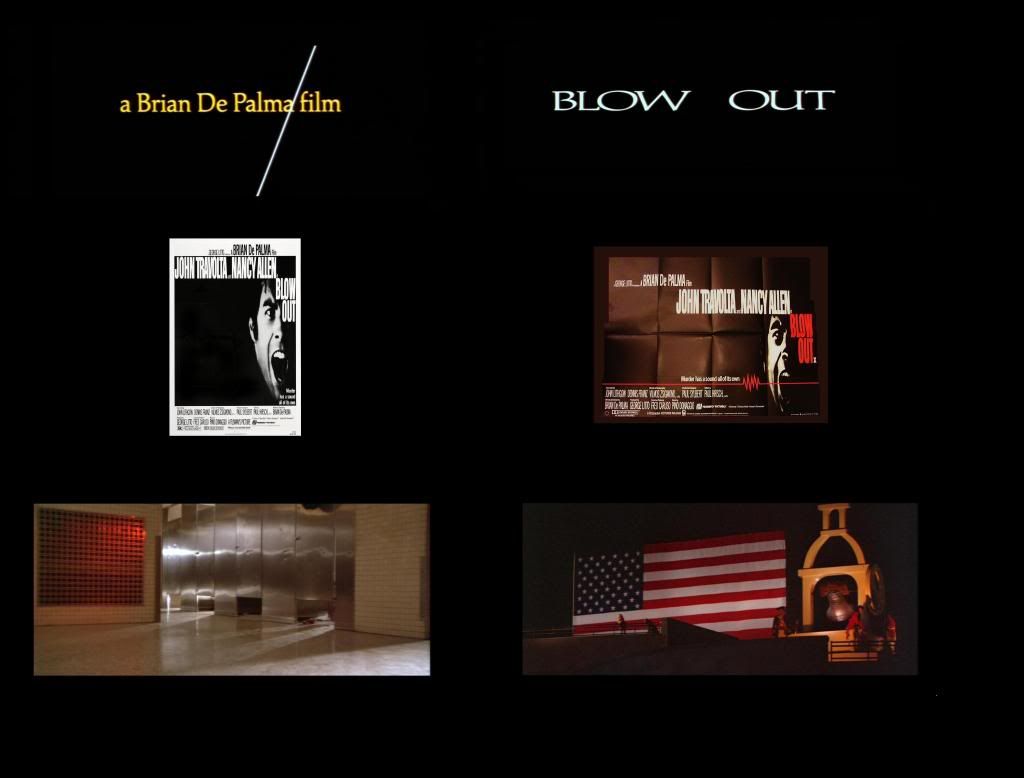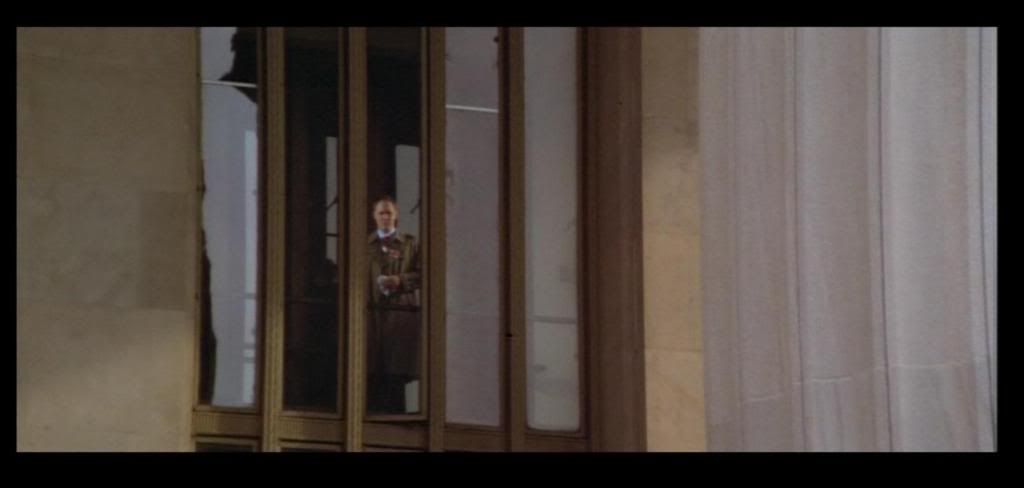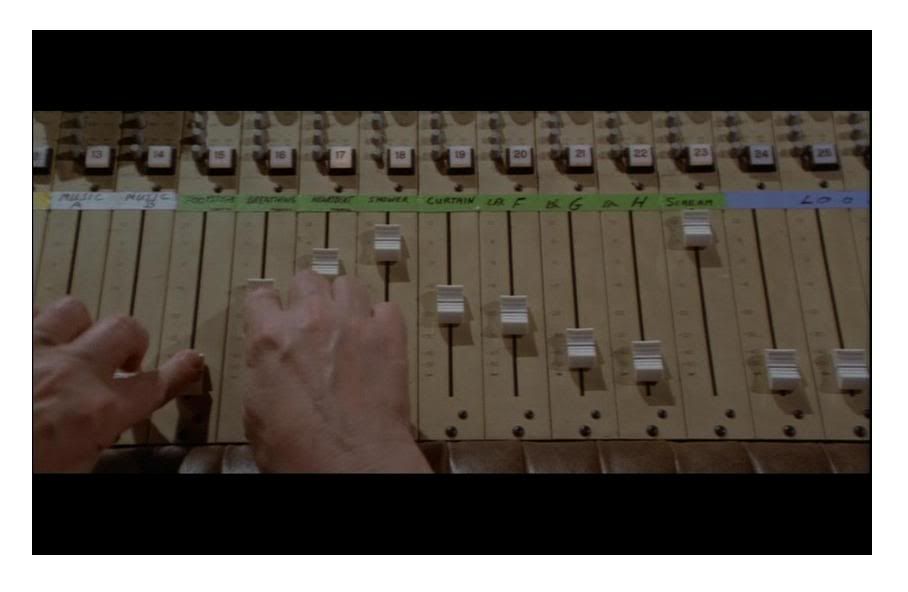ThisgringospeakstoomuchbutwillburstifIholdbackthefeelingssoIrambleafterthispreamble.
If you are not me as you are reading this page, then I say "How the hell did you get here?"

In the bottom of the frame grabs just above we see on the left the interior of the ladies room at 30th Street Station, and on the right the exterior location of the Liberty Day celebration at night.
These frames are a nice example of De Palma's artistry in the manipulation of a shape which reinforces the telling of the story.
One aspect of the visual throughline in the production design of Blow Out are the colors red, white and blue and naturally the American flag. We see patriotic bunting in the hotel celebration with Gov. McRyan on the local news, and we see the flag in public and being offered as mementos for sale during the evening portion of the Liberty Day event. To my eye the design of the lines and shapes in the framing of the ladies room suggests a variation on a theme. This is an abstraction which blends into the scene but it also stands out as being an odd interpretation of the US flag.
When you see the film and observe the continuity of meaning, these two frame grabs are an instance of how De Palma can visually stimulate the viewer graphically with the immediacy of the story line as it occurs in real time, and simultaneously he is providing another building block for the viewer to reach an understanding of a character and allow the audience to experience a more satisfying emotional climax of the film.
The Burke murder of the hooker takes place in a public setting. This rendering of the American flag with a blood red upper left grid (which replaces the 50 stars on a blue square), and a wall of cold-looking closed aluminum doors with vertical lines being emphasized (as opposed to the horizontal alternating white and red stripes) are not just visual details of the location of a murder, it is also an indication of how Burke, in his delusional state, has confused his psychopathic murderous substitution of violence as sex with a paranoid vision of being a patriot. He performs his undercover tasks in the open and in the dead of night.
He is cloaked within his misguided sense of what is right. He believes he is serving to protect our flag and our country. Burke is a lethal, real-life embodiment of the goofy slasher who wears a satin red, white and blue jacket as seen in
Co-Ed Frenzy, the film-within-a-film in the first reel of
Blow Out.
The vertical lines in the ladies room scene, along with the framing used in the exterior of 30th street station scenes are links to Burke and his dominance, his active role as an obstruction to progress and healing, his ability to operate freely and impede others and control the flow of the film.

Jack Terry will become the true patriot that Burke pretends to be, and with Terry surging forward towards the audience with the American flag so boldly pulsing in the background, we see a triumph of the horizontal over the vertical in Terry's struggle with Burke.
In order for the viewer to feel the ultimate impact of the climax and final reel of Blow Out, De Palma has to create a chain of events that will prepare us for that moment. De Palma creates an initial link between the shower scene in Co-Ed Frenzy and Sally's scream and the verticality associated with Burke as the film moves forward from this shot of the mixing board in the first minutes of the film. These types of visuals are also an indication of the relationship between a beginning and an end, a story moving full circle, and a story line that will progress from stasis to a new location of a bottom to a new vista at a top; this is a movement through aspects of mood and structure presented dramatically, architecturally and emotionally. In order for that to occur for the viewer with the understanding of hindsight, which is a quality of introspection that is often not available to a main character like Jack Terry, the audience needs to "see" the film repeatedly or certainly more than once or twice.

updated 12 10 2010



